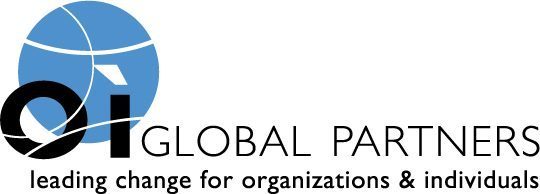Jan. 13, 2015 — With the number of new jobs increasing and the unemployment rate falling, more people will be testing the job market this year for new or better jobs. Their efforts will be more effective if they learn such tactics as how to customize their communications for each prospective employer, transfer their capabilities to match the requirements of available jobs, remain open to new and different job-search methods and other strategies, according to OI Global Partners, a leading human resources consulting firm.
OI Global Partners surveyed its career consultants throughout North America and developed the following list of the seven most successful job-search strategies being used today. According to the survey, they are:
- Customize all communications to fit each prospective employer (selected by 80% of consultants).
- Learn how to transfer your capabilities to match the desired job opportunity (78%).
- Remain open to new and different job-search strategies (68%).
- Develop a comprehensive social media profile with searchable key words (65%).
- Have as many face-to-face networking and informational meetings as you can (60%).
- Only target jobs for which you have at least 75% of the stated qualifications (58%).
- Explore temporary and contract work and freelance arrangements (55%).
“These tactics will help people differentiate themselves – from their resumes and cover letters, to translating their past experience to new positions, to building strong social media profiles, to acquiring new skills from temporary and freelance jobs – and demonstrate why they would be the best hires,” said Patty Prosser, chair of OI Global Partners.
- Customize all communications to fit each prospective employer: “Employers are using technology to screen applications and non-customized submissions will not meet the criteria or key words in the job specs. ‘Customize all communications’ does not mean continually customizing your resume. It’s not only time-consuming, but causes more confusion for job seekers when trying to recall which resume was sent to whom. Instead, customize each cover letter based on what qualifications the potential employer is seeking. Include the name of the hiring manager or human resources manager in your cover letter,” said Prosser.
- Learn how to transfer your capabilities to match desired job opportunity: “You need to be able to state how your skills translate to new position. Highlight your competencies that match those the employer is seeking. Applicants must demonstrate they can do the job. It’s sometimes difficult for prospective employers to interpret how your prior experience will deliver the desired results. If job-seekers do not adequately ‘bridge build’ their experience to the new position requirements, do not expect an interviewer to do it. This is especially important for former members of the military and their titles and job descriptions, which may not be clearly understood by non-military interviewers,” said Prosser.
- Remain open to new and different job-search strategies: Working with a career coach can help you identify new strategies and improve existing ones. Learn as much as you can about how social media sites such as LinkedIn are impacting the search for talent. In addition, a job-search method often referred to as a “handbill” or “profile” can prove effective in place of a resume, especially when you want to stress your strengths and functional skills, or mask too many jobs or gaps in employment. The handbill or profile does not include titles or chronology. Approaches that are a bit more unique can help in making an applicant stand out from being “just another resume.”
- Develop a comprehensive social media profile with searchable key words: “Employers are relying on technology first and the human touch second. More that 8 out of 10 internal and external recruiters use LinkedIn to search for potential desirable candidates, so you need to be included in LinkedIn searches. Review the LinkedIn profiles of others in your field and/or advertised job descriptions to capture frequently-used “buzz words.” Develop a strong, consistent branding message with searchable key words. Blogging and Tweeting on industry-related topics can help raise your social media profile. Also, employers are more frequently checking all levels of social media to see if the information an applicant has submitted is the same as can be found on social media sites,” said Prosser.
- Have as many face-to-face networking and informational meetings as you can: As many as 80% of new jobs are found in the so-called “hidden job market”– not listed on websites, job boards or with recruiters. An in person meeting will typically result in a stronger, more personal connection than submitting a resume or a telephone call. Stay away from emailing network contacts. Although “easier,” it takes away the personal touch. Informational meetings are a great approach if you are trying to gather information about a given company, industry or career or are considering a career change. Be upfront, however, that if you set up an informational meeting, it is meant for that purpose – to gather information — and not a ruse to ask for a job.
- Only target jobs for which you have at least 75% of stated qualifications: Due to the volume of resumes received, employers must narrow the field of candidates, so the more matching qualifications you have, the better. Don’t waste your time applying for jobs for which you don’t fit the qualifications. Electronic screening will weed out unqualified candidates before a person ever sees your resume. Without at least 75% of the qualifications, it is likely there will be many applicants who better match the desired job specifications.
- Explore temporary and contract work and freelance arrangements: A great number of full-time jobs today start out as temporary jobs or freelance or contract work. Employers don’t like gaps in employment or long term unemployment. Temporary or contract jobs are a way to bridge an employment gap, get experience, keep your skills sharp, acquire new skills and develop networking contacts. More employers are requesting that job candidates work 3- to 6-month temporary assignments before determining whether to hire them full-time. Temporary jobs have expanded beyond their traditional role in recruiting primarily administrative positions to include executive, managerial and entry-level posts in accounting and finance, information technology, medical, sales, legal and other professions.
Media Contact:
Sal Vittolino
svittolino@oiglobalpartners.com
610-359-8773



Comments are closed